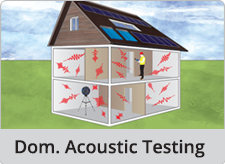Offices Nationwide
• Glasgow
• Newcastle
• Manchester
• Portsmouth
• Wakefield
• Sheffield
• Birmingham
• Wrexham
• Cardiff
• Peterborough
• Milton Keynes
• London
• Plymouth
• Anglesey
• Glasgow
• Newcastle
• Manchester
• Portsmouth
• Wakefield
• Sheffield

Good Hearing?
A typical person with good hearing can hear from about 20Hz to 20kHz (the audio bandwidth). A person's voice will usually range from 500Hz to 2kHz...more

Environmental Noise Levels
The max exposure time at 85 dBA is 8 hours, at 110 dBA it's just 1 min 29 seconds. If exposed, limit the time and wear hearing protection...more
Ingatestone - Room Integrity Testing - 020 3390 0301
The office that covers this area is: London
Phone Number: 020 3390 0301 Email: ingatestone@e2consultants.co.uk
Our other services include:
Room Integrity Testing can also be known as:
Fire Suppression Room Integrity Testing, Fire Suppression Testing, Server Room Testing,


Copyright 2025 E2 Specialist Consultants Limited
Company No. 06728970









































